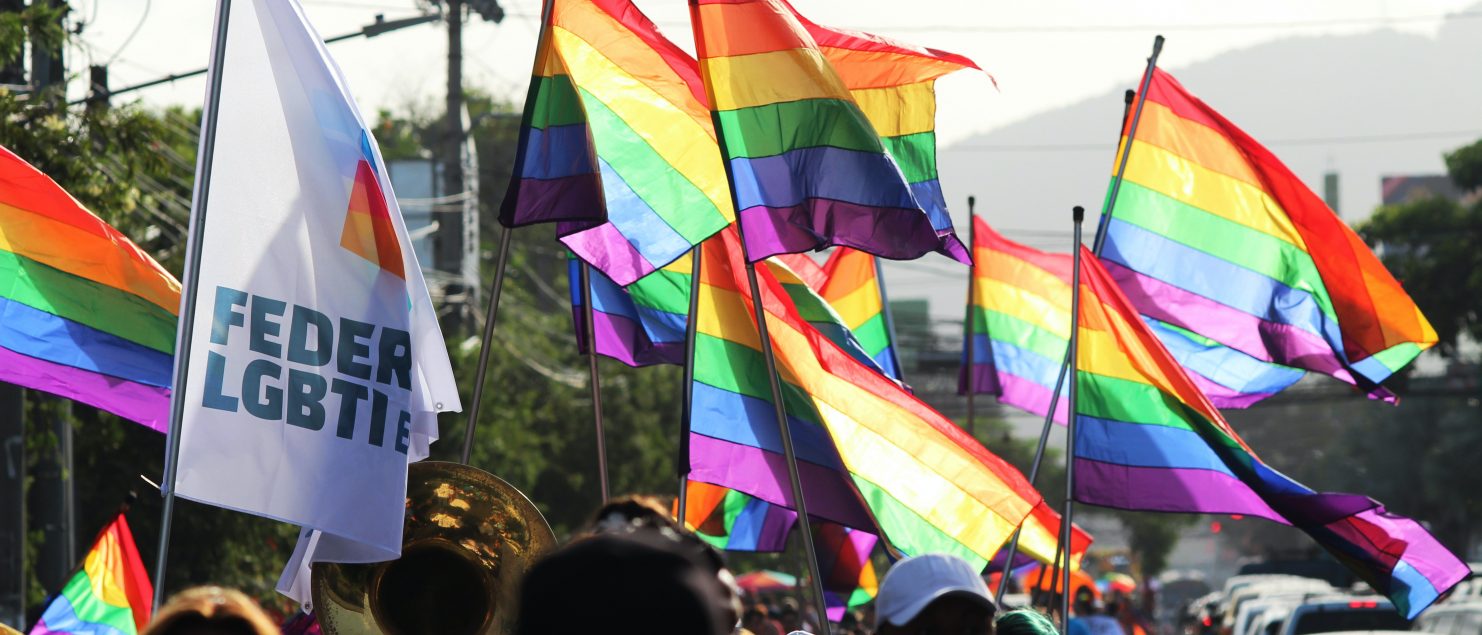LGBT flags: variant guide and meaning
June is coming to an end and we are about to end the month of Pride, or as it is better known internationally the Pride Month, with the World LGBT Pride Day on June 28 to crown it all.
This month, for years now, the squares are filled with colors, music and flags in a festive atmosphere, to celebrate the pride of the LGBTQ+ community and, in a broader sense, to celebrate values such as love, freedom, equality between all people, regardless of their origin, gender or sexual orientation.
Pride Month is therefore the month where first of all love is celebrated and where civil rights are claimed, through initiatives and events that help to increase sensitivity towards these issues, with the hope that one day anyone can feel really free and proud to be themselves.
We want to “celebrate” the month of Pride almost ended, in our own way, obviously focusing on the symbolism and therefore on the LGBT flags that are seen waving during the demonstrations.
LGBT flags
The world of LGBT flags is extremely varied and, over the years, has expanded more and more with the birth of new flags, each with the aim of being inclusive and representative for specific communities.
Not only the now famous rainbow LGBT flag, therefore. Today LGBT flags are an explosion of colors, some recurrent, some always different, but never random.
In each LGBT flag each color has a specific meaning or represents a particular community.
It is therefore interesting to know all the variants of LGBT flags, to discover the meaning of each. Let’s start with the first ever: the LGBT flag “Pride Flag”.
Pride Flag
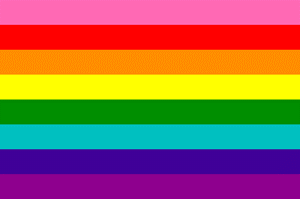
The Pride Flag is the first LGBT flag to have seen the light. It is a creation of the artist and activist Gilbert Baker who, on the occasion of the San Francisco Pride in 1978, is inspired by the rainbow to draw a flag to represent the gay community. In fact, the flag does not take up exactly the exact same colors as the rainbow, but adds pink in the first band at the top.
In the very first LGBT flag, taking the meanings of each color we can understand the high symbolic value: pink represents sexuality, red is a symbol of life, orange symbolizes health, yellow the sunlight, green nature, turquoise art, blue is synonymous with serenity, while purple represents the spirit.
However, this is only the first LGBT flag that, over the years, will pass between many evolutions and variations.
Traditional Pride Flag
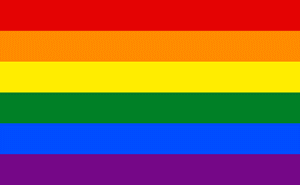
The LGBT flag for excellence as we know it today and perhaps the most famous of all. The Traditional Pride Flag was born in 1979, as a natural evolution of the Pride Flag, an evolution due above all to technical issues that push to eliminate pink (often complex to print and reproduce) and turquoise (for a better visual result).
The LGBT flag therefore does not lose the meanings associated with it, but is simplified, also to facilitate recognizability.
Progress Pride Flag
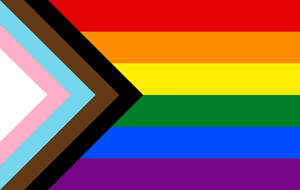
The “Progress Pride Flag” is a variant of the LGBT flag recently introduced to create an even more inclusive version.
In this flag the shapes also change and to the 6 bands of the Traditional Pride Flag are added another 5 colors arranged to form a triangle.
Of these 5 added colors, light pink, blue and white represent transgender pride, while black and brown represent ethnic minorities and AIDS patients or victims.
More Colour, More Pride Flag
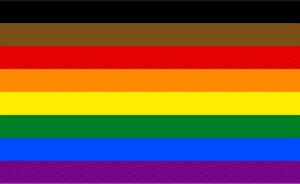
This LGBT flag was first presented by the City of Philadelphia during Pride Month 2017.
This variant also starts from the Traditional Pride Flag, to which two bands are added on the upper end, one brown and one black, to represent black LGBT+ people, with a message of inclusiveness not only linked to gender or sexual orientation, but also to ethnicity.
Lesbian Pride Flag
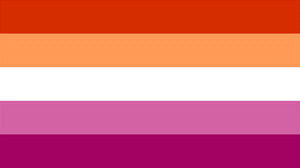
The Lesbian Pride Flag represents the lesbian and feminist community and is just one of the many variations that have occurred over the years.
In this version, in which shades of pink prevail, the 7 colors together represent aspects at the base of the lesbian community such as the very sense of community, independence, gender non-conformity, peace, love, sex and femininity.
Bisexual Pride Flag
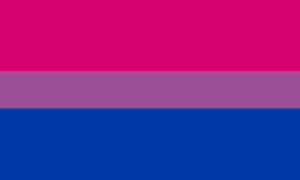
The Bisexual Pride Flag is one of the LGBT flags with the fewest colors, only three, but it also visually incorporates a very strong symbolism.
Born in 1998 by Michael Page, the flag represents the bisexual community through the use of the two colors most commonly used to represent man and woman, blue and pink, which merge into lavender, to represent the attraction for both sexes.
Trasngender Pride Flag
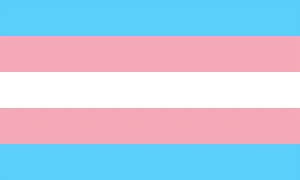
This LGBT+ flag, designed by Monica Helms, first appeared during 2000 Pride in Phoenix, Arizona.
The flag composed of 5 stripes, two blue, two pink and one white in the center, represents the whole transgender community and contains a beautiful message of inclusiveness and representation, as the creator also explained:
“Blue is the traditional color for males, pink is for females, and white in the middle is for those who are transiting, for those who feel they have a neutral gender or no gender at all, and for those who are intersex. The sequence is such that it doesn’t matter how you see it, for it will always be correct.”
Non-binary Pride Flag
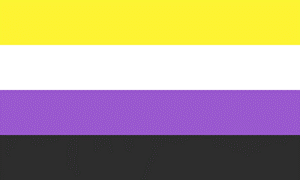
The Non-binary Pride Flag was created in 2014 by Kye Rowan, just 17 years old, to represent all people who identify as non-binary, regardless of sexual orientation.
The four colors on the flag (yellow, white, fuchsia and black) each represent a different kind of non-binary identity.
Genderqueer Pride Flag
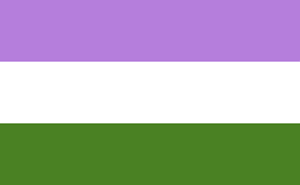
Created by Marilyn Roxie in 2011, and therefore prior to the Non-Binary Pride Flag,this LGBT flag wasalso originally born to represent the genderqueer community and more generally all people who do not identify with the binary gender.
However, with the growth of the Genderqueer community, the flag has become a symbol of this specific community, leading non-binary people not to feel fully represented by the flag. This is where the origin of the Non-binary Pride Flag mentioned above lies.
The Genderqueer flag shows 3 colors: lavender for androgyny, white for gender neutral identity, and green for people who do not identify with the binary gender.
Genderfluid Pride Flag
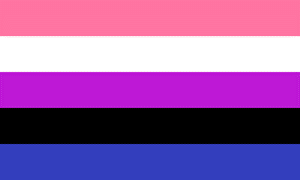
This LGBT flag created by JJ Poole in 2013 represents people who do not recognize themselves in a gender, embracing the idea of a floating gender (genderfluid).
In this flag pink represents femininity, blue masculinity, while purple symbolizes both. Joined to these, we find black that symbolizes all genders and white that represents the absence of gender.
Straight Ally Flag
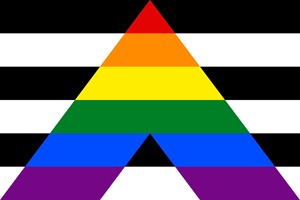
This particular flag, increasingly present in LGBT events, contains an important message of inclusiveness, of increasing sensitivity and awareness in society on these issues.
The flag represents all heterosexual people who want to actively support the LGBTQ+ community.
On the flag there is a stylized letter “A”, with the colors of the Traditional Pride Flag, symbolizing Activism, while black and white represent sexual orientation.
Intersex Pride Flag
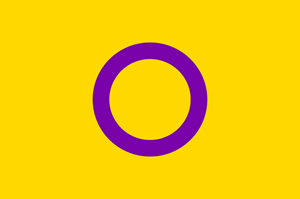
Created in 2013 by Morgan Carpenter, this flag represents a community that is estimated to be between 0.05% and 1.7% of the world’s population, but in Pride and LGBT flags it is crucial that everyone can feel represented.
This flag represents intersex people, that is, who do not show all the biological characteristics of the male or female or present a combination of the two characteristics at birth. The flag was designed with the intention of not using colors normally associated with a gender, such as pink or blue, choosing instead colors never before associated with a sexual gender, such as purple and yellow.
Polysexual Pride Flag
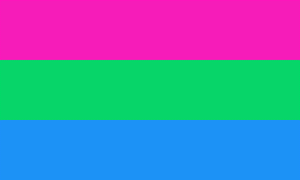
This flag symbolizes the attraction to different genders that it represents through three colors: pink for the attraction to the female gender, blue for the attraction to the male gender and green, in the middle, for the attraction to genders that do not belong to the binary gender.
Asexual Pride Flag
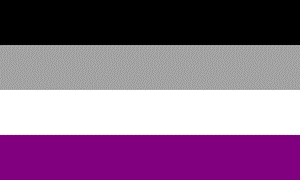
Just as there is a flag to symbolize attraction to different genders, the Asexual Pride Flag exists to represent all those people who call themselves asexual and who do not feel sexual attraction to any gender.
Pansexual Pride Flag
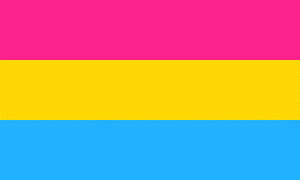
Finally, the Pansexual Pride Flag, created in 2010, encompasses the concept of pansexuality or a sexual orientation that involves emotional, romantic and / or sexual attraction towards an individual without giving importance to his sex and gender.
It is composed of three colors: pink that represents girls, blue that represents boys and yellow that encloses all people who define themselves as non-binary or of unsedicated gender.

